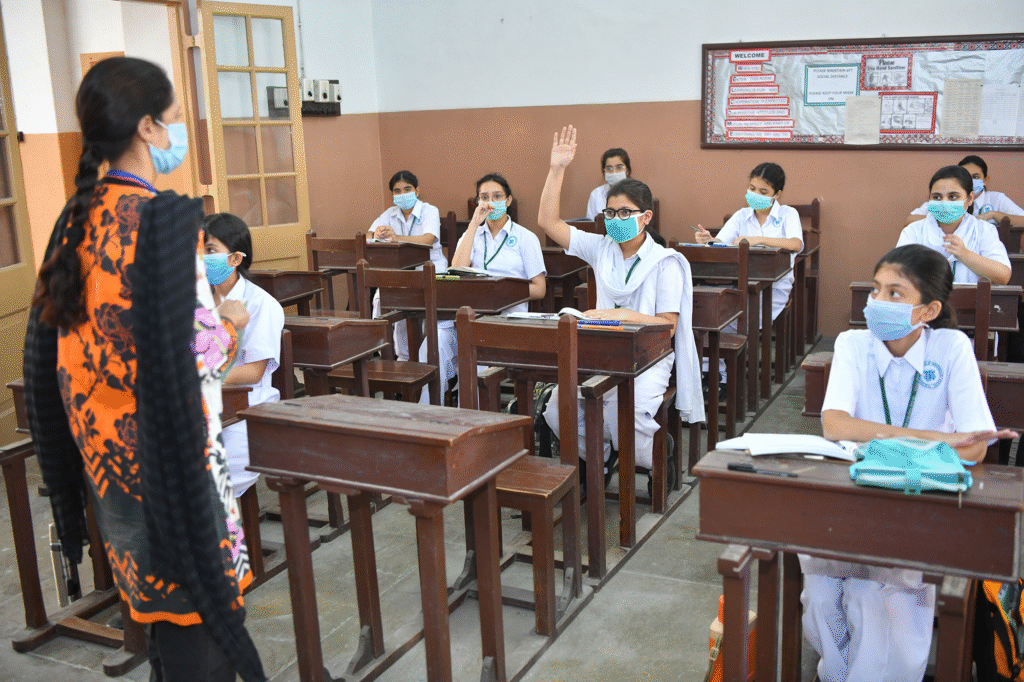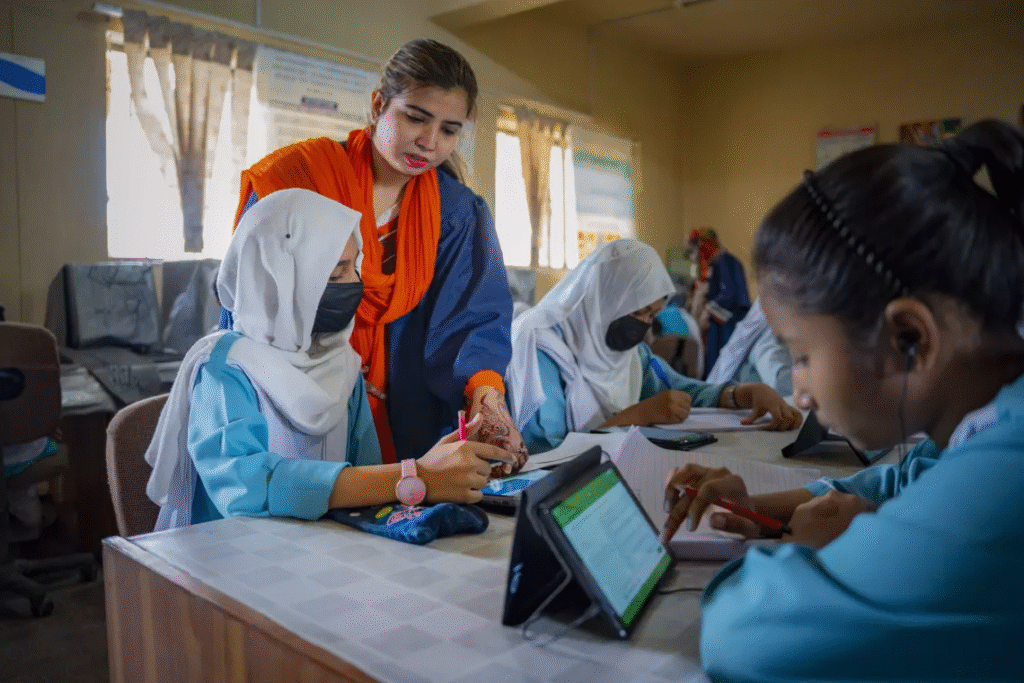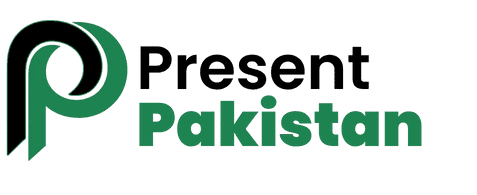Peace is the essential aspiration of every nation, and for Pakistan in particular, it is the very basis for progress, prosperity, and stability, too. In a nation of over 240 million people, where social divides, poverty, and extremism have existed for much too long, there is a single remedy to all these problems: education. Education both raises an individual, and society up, as well as reduces violence and builds a culture of tolerance and coexistence.
If peace has to be achieved in Pakistan, the education crisis must need to be addressed. With almost 23 million out-of-school children, gender inequalities, rural-urban gaps, and one of the most acute education crises in the world, Pakistan must know that education is indeed the most powerful weapon we have to fight ignorance and extremism.

Education Should Be the Route to Peace in Pakistan
Breaking the Cycle of Poverty: Many times poverty creates frustration that can lead to crime and/or extremism. Education provides people with the ability to earn a living, and can help break the cycle of poverty.
Building Tolerance and Respect: Schools help expose children to different identities to teach children about the importance of dialogue, and respect toward cultures/beliefs other than their own.
Reducing Extremism: Research has found that educated societies are less susceptible to extremist ideologies. Education promotes critical reflection, which can reduce the chances of accepting hate filled messages uncriticly.
Cultivating Civic Responsibility: Educated citizens understand their rights, and responsibilities. Education provides citizens with the knowledge and skills they need in order to contribute positively to their community.

Historical Context – Education and Peacebuilding in Pakistan
At the time of independence, the founder of Pakistan, Muhammad Ali Jinnah, stated education was a critical ingredient for nation-building and development. This priority was undermined by political instability and lack of investment. Over the course of the decade, weak educational systems, poverty, and inequality created conditions for extremism to flourish.
In the 1980s, madrassas moved to fill the education void, but without modern curriculum. Extremist elements capitalized on youth’s vulnerabilities and swelling numbers in madrassas, to recruit and raise awareness. Further, neglect of girls’ education allowed for further neglect of peaceful family systems.
There is a long history of neglect which adds to the urgency that education need to be re-centered as the key strategy of peace.
Current Educational Landscape in Pakistan
In Pakistan, the country is grappling with:
- Literacy: Expected to sit at around 62% in , lower than comparable regions.
- Gender disparities: Millions of girls remain out-of-school due to poverty and cultural barriers, and girls often experience safety issues at school.
- Rural vs Urban: Rural areas, in many cases, do not have schools, or trained teachers or resources.
- Out-of-school children: Approximately 23 million of them, one of the highest in the world.

The Role of Education in Promoting Peace in Pakistan
Mindsets for Critical Thinking and Tolerance
Schools and universities help students nurture their minds to question and reason, and to accept and respect diverse perspectives.
These are essential ingredients for building tolerance. Minimizing Extremism and Radicalization Young people with access to better education are not vulnerable to extremist rhetoric.
Empowering Women’s Role for a Peaceful Society An educated woman is able to raise a more healthy and tolerant family, thus promoting peace at the family level, and ultimately the community level.
Reducing Social Inequality Education creates opportunities of equality, minimizing resentment and improving social divides that can lead to conflict.
Case Studies – Education Building Peace
Malala Yousafzai: Malala Yousafzai has continued her work for girls’ education and has become the symbol of peace and defiance against extremist thought.
Teach for Pakistan: An initiative sending graduates into schools without resources, to engage and promote quality learning.
The Citizens Foundation (TCF): Constructed more than 1,800 schools, in marginalized areas and tens of thousands of children now have the opportunity to access a school.

Problems with Pakistan’s Education System
- Lack of Funding: Education has less than 2.5% funded of GNP.
- Out-of-School Children: The scale of the crisis disrupts peace-building efforts.
- Under-qualified teachers-in-training: Many individuals are not trained in peace education.
- Madrassa reform: Nationally, curricula are slowly being modernized.
Options to Enhance Education for Peace
- Curricular Change
Integrate ethics, peace education and civic responsibility into formal curricular.
- Teacher Education and Capacity Development
Provide teacher with a ‘toolkit’ to encourage inclusion, tolerance, and dialogue.
- Public-Private Partnerships
Engage NGOs and government to widen the access opportunity.
- Technology Enhanced Learning
E-learning platforms create learning opportunities in remote, rural, or conflicted affected contexts.

The Contribution of Young People in Peace-Building through Education
Pakistan’s youth (60% of a population) present the most powerful agents of change, via education they can:
- Promote dialogue via social media.
- Volunteer at community schools.
- Serve as ambassadors of peace in their respective communities.
The Enviroment of Pakistan – Education for Peace and Stability
Imagine what Pakistan could look like in 2047 – a celebration of 100 years of independence. If the country invests heavily in education now, a new Pakistan may emerge that is a tolerant, peaceful, and prosperous nation. Literacy can be a vehicle for personal achievement but can also be a catalyst for national solidarity.
Conclusion
Education is more than a tool. It is the key to peace in Pakistan. Education helps alleviate poverty, combat extremism, empower women, and decrease inequalities to create a stable and peaceful society.
“Join the transformation of Pakistan. Please go to PresentPakistan.com, support education initiatives, and help promote peace and build the future of our country. Together we can create a peaceful Pakistan through education.”
FAQs
Q1. How does education contribute to peace in Pakistan?
Education reduces poverty, promotes tolerance, and mitigates extremism by helping students learn to respect differences.
Q2. What is the role of teachers in peacebuilding?
Teachers support the notion of non-violence, dialogue, and civics as part of education.
Q3. Why is education of girls important to peace?
Educated women produce empowered children, promote empowered families, and promote equality.
Q4. What barriers are there to education and peace?
Barriers include low resources, gender inequality, outdated content in curricula, and poor teacher training.
Q5. How can youth spread peace via education?
Youth can volunteer, raise awareness, and create a virtual presence to act as peace ambassadors.
People Also Ask:
1. In what ways does education contribute to peace?
Education promotes peace primarily by teaching tolerance, respect for differences, and developing problem-solving skills. Educated people are less likely to commit violence or be drawn to violent ideologies, and more likely to settle disagreements toward a productive collaboration.
2. What link is there between education and peace in Pakistan?
In Pakistan, education and peace are knitting functions. Lack of education is related to poverty and extremism, while quality education increases critical thinking, and makes people less radicalized and gives agency to youth. A society that is educated strengthens institutions and serves the basis for coexistence; a model for long-term peace.
3. Can education have any positive impact in reducing terrorism in Pakistan?
Education can have a significant impact on decreasing terrorism in Pakistan, Education provides people with knowledge and critical thinking skills and skills to earn a living education will diminish the risks of youth falling victim to exploitation by extremist organizations. Peace/anti-extremist curricula created by education systems and democratic education help to challenge extremist narratives.







